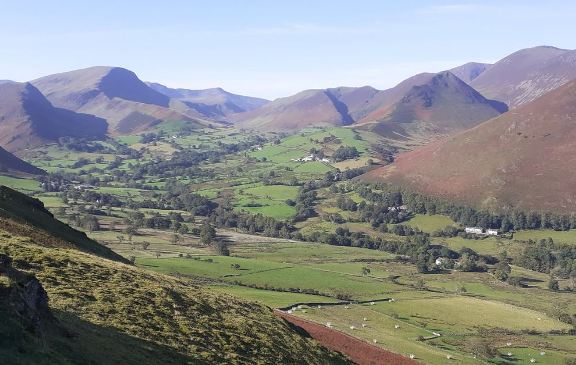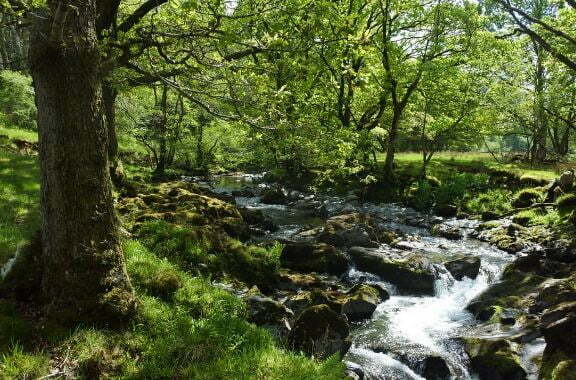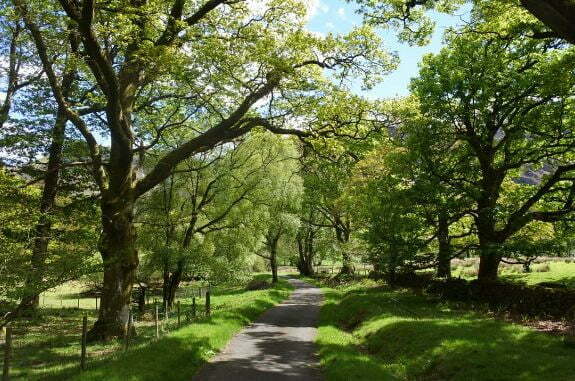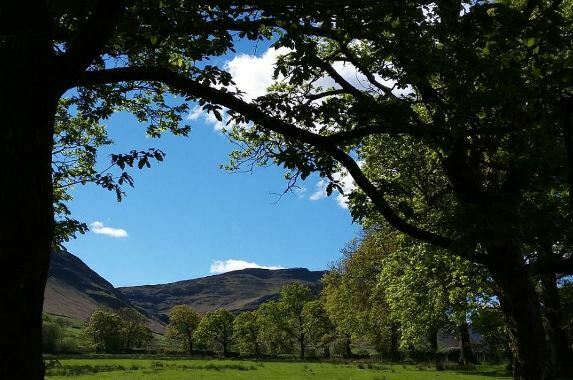
I have many favourite spots in the Lake District, but one stands out above the rest. I treasure Borrowdale, of course; the circuits to be made of Derwentwater, Loweswater and Buttermere; the gentle St John’s in the Vale; the secret lands to the north of Skiddaw (Back’o’Skiddaw); and beautiful Grisedale, which greets climbers descending from Helvellyn to Ullswater. But finest of all is the Newlands Valley.
The Newlands Valley is an overlooked treasure. Situated close to the visitor focal points of Keswick and Derwentwater, it is almost uncannily empty at most times of the year. Lacking any significant tourist attractions – no lake or tarn, no waterfalls, barely an association with anyone famous (Beatrix Potter used it as a background to some stories, but the Potter enthusiasts all gravitate towards pretty Hawkshead, much further south), no main road (a road taking you to Buttermere creeps high along the side of the valley), just two cafes. There are a few farms, a handful of hamlets, and a sense of utter quiet.
If you are approaching from Keswick on foot (which is all that you should do), there are two routes of entry. One is to go through the village of Portinscale, south through Overside Wood, then come out by a cattle grid near Swinside Lodge. Signs direct you upwards to the famed high viewpoint of Cat Bells. You will see the queue of people, dutifully pursuing this route because the Lake District guidebook writer-in-chief, A.J. Wainwright, recommended it, so the herd follows. You instead will go west along the rocky path at the foot of the fell, past Skelgill and on to Little Town, a hamlet of a handful of houses and the finest tearoom in the Lakes, serving its B’n’B customers and the discerning walker. Below as you travel, you will see the inviting green valley, but ahead of you there are the jagged remains of disused lead mines, a reminder that before the Lakes were home to romantics they were home to hard industry. You then make a U-turn and descend into the valley.
The other route, which is my usual choice, is to go west from Portinscale to Little Braithwaite, then follow the Newlands Beck (the stream that flows through the centre of the valley), with the hill of Swinside to your left (when I last visited in September 2021 this first part of the journey was closed owing to soil erosion of the stream banks). This is the musical journey, as the quiet theme of following the tree-lined beck upstream leads you imperceptibly into the unfolding, deeper resonance of the central lands of farm, wood, twisting narrow road, and in and out of your path the beck sometimes appearing, sometimes barely visible as it slips into a deep gorge, leading you ever onwards.

The valley has this extraordinary quality of time stood still. It is not because of the picture postcard beauty, or of the illusion of an unchanging way of life, though those may appeal. It is rather the sense that everything has fallen into harmony, that the ideal balance has been achieved. Everything is settled. You proceed, perhaps tempted to head up the slope to Little Town, then down again to the wooded area of Gillbrow, where one meets up with the beck at its most accessible and entrancing.
It is at the approach to the Gillbrow woods that you will find Newlands Church, the focal point of the valley. It is bright white with slate roof, a tiny former school house to the rear, with a stone wall encircling church and small graveyard. Dating back to the sixteenth century, the tiny building is like that prick of white light in the eye. It realises the composition of the work of art into which you have travelled. It gives understanding. Of course, there is something satisfying about seeing the small place of worship, seemingly unaffected by the changing ages, representing a calm beyond the frenetic turn of outside life, reflecting the sense of the valley itself. But there is something also in that pinpoint quality. It is as though the hands of the clock move slowly, remorselessly onwards, but you have found yourself at the centre of those hands, where all must be still.

Go inside the church. Smile kindly at the sight of the few pews, the plain adornments. Climb the stairs at the back, hidden behind a curtain, and take in the balcony view. Pause a while. Then move on.
Proceeding along the roads and paths than follow the beck (which is now Keskadale Beck, Newlands Beck itself rising to the south from Dale Head) as the land slowly lifts. Proceed through the fells out of the valley past Keskadale Farm and you can follow the long serpentine road through a denuded valley up and then down to Buttermere to join the crowds once more. Or you can turn back along the eastern side to Rigg Beck then take the narrow westward path through an equally denuded valley, past Rigg Screes, till again one comes down towards Buttermere – a stark landscape along the way, but an exhilarating journey for all that.
Or you can simply turn round at Keskadale and retrace your steps. The road along the edge of the fell to the west of the Newlands Valley will give you fine views at least, but you will rather be in the heartland.

I am a regular visitor to the Lakes, and every time I do so I pass through the Newlands Valley. There is more than pilgrimage to such repetition. There is the absurd hope that one day I might turn a corner and find myself.
When I was young we went on a family holiday to the Lake District, where I fell in love with the place. My parents did too. Briefly letting romance rule their heads, they thought of moving to the Newlands Valley. There was a former pig farm – or it could have been once a chicken farm – for sale. Whether it was converted into a home or had the potential to be so, I don’t know, but there was a moment or two when the Newlands Valley was going to be my home. Then common sense prevailed, and we returned to the necessary security of Kent.
But something of me was left behind. In that other life, I grew up in the Newlands Valley. It was not my heaven but my home. I walked those paths, followed each turn of the stream, looked up to those mountains that encircled my world and understood my place in it. There would be schooling, and friends, and loves, and work, with other people whose own lives have now followed a different trajectory because I was never there. I knew of the outside world from the television set, and maybe grew frustrated at a life so slow it scarcely moved at all. I escaped, perhaps, to who can say where. I would come back from time to time, out of duty, or habit, or creeping nostalgia. That part of the dream is unclear.
Or perhaps I did not escape, did not want to escape, understood the place because the place understood me.
Walking around the Newlands Valley is my other self. I do not envy that other self as such – we each had our choices made for us, then made choices of our own. But I am curious to know how that other self might be. Perhaps we would be uncertain strangers. Perhaps we would be the same person, programmed to face the world in a particular way no matter what the time or place. If I just follow one more turn of the stream, there I might recognise a familiar face, and we might each of us find that for which we have spent all our time looking. Then the hands of the clock will not matter any more.
